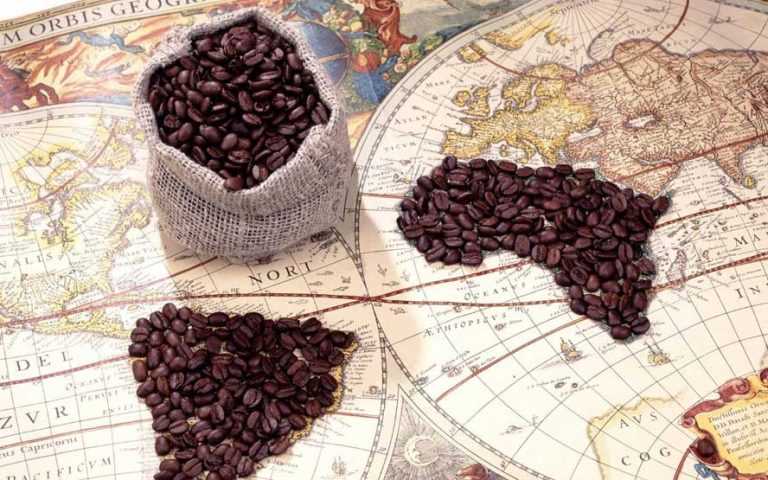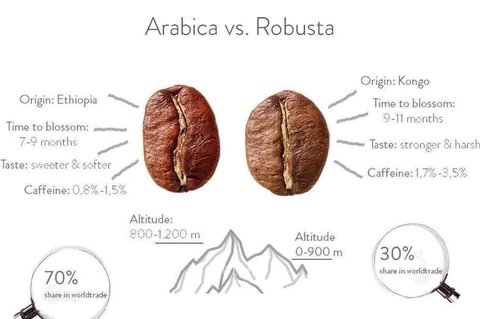Coffee has been brewed and enjoyed for centuries, with various methods evolving over time to create the perfect cup of joe. From early methods like the Ibrik method and coffee pots for coffee houses to modern technologies like the AeroPress and Hario V60, the world of coffee brewing has come a long way.
In this article, we will take a journey through the history of coffee brewing methods, explore the evolution of techniques, and compare the different methods available today. So grab a cup of your favorite brew and join us on this fascinating journey through the world of coffee brewing.
Key Takeaways:
- Coffee brewing methods have evolved significantly throughout history, from early methods like using socks to modern espresso technology.
- Each method has its own unique characteristics and has contributed to the diverse and evolving coffee culture around the world.
- The French Press, AeroPress, and Hario V60 are popular manual brewing methods that have gained popularity in recent years due to their simplicity and ability to produce a flavorful cup of coffee.
The Evolution of Coffee Brewing Methods: A Historical Perspective
The evolution of coffee brewing methods over centuries provides a fascinating insight into the rich history and diverse techniques used to create this beloved beverage.
Historically, the journey of coffee brewing began in the 9th century when coffee beans were roasted and boiled into a hot, stimulating drink by Ethiopian monks. This early method laid the foundation for more advanced techniques.
In the 15th century, coffee spread to the Middle East, where the concept of brewing emerged. Soon after, the Turks invented the ibrik, a small pot perfect for brewing Turkish coffee, known for its strong flavor and unique preparation method.
Fast forward to the 17th century, the Dutch introduced the concept of the coffeehouse, shaping coffee culture and social interactions as we know them today.
Early Methods
Early methods of coffee brewing date back to ancient times, where civilizations developed rudimentary ways to extract the essence of coffee beans for consumption.
One of the earliest known coffee brewing techniques involved boiling the ground coffee beans in water, creating a potent concoction that provided a much-needed energy boost. Over time, various civilizations refined their brewing methods, experimenting with different roasting techniques to enhance the flavor profile of the brew.
The cultural significance of coffee transcended mere consumption, as it became a social ritual in many societies, fostering gatherings and intellectual discussions amongst coffee enthusiasts. From the mystical coffee ceremonies in Ethiopia to the bustling coffeehouses of the Ottoman Empire, the rich history of coffee brewing intertwines with human civilization.
Ibrik Method
The Ibrik method, also known as Turkish coffee brewing, is a traditional technique that involves simmering finely ground coffee with water in a special pot called an Ibrik.
This method has been an integral part of coffee culture in regions like Turkey, Greece, and the Middle East for centuries, known for its strong, bold flavor and unique preparation process.
To prepare Turkish coffee using the Ibrik method, one starts by combining water, sugar, and finely ground coffee in the pot and bringing it to a gentle simmer over low heat. The coffee is then poured into small cups, grounds and all, allowing the sediment to settle at the bottom, resulting in a rich, intense brew.
Coffee Pots for Coffee Houses
Coffee pots designed for coffee houses emerged as a popular brewing method in Europe, catering to the growing demand for freshly brewed coffee in social settings.
Coffee pots in historical coffee houses were not only functional brewing vessels but also iconic symbols of European coffee culture. These pots were intricately designed with ornate motifs and patterns, reflecting the elegance and sophistication of the social gatherings they were a part of.
The functionality of these coffee pots was crucial in efficiently brewing large quantities of coffee to serve patrons. Their durable construction and heat retention properties ensured that the coffee remained hot and flavorful, enhancing the overall experience for coffee enthusiasts.
The act of serving coffee from these pots became a ceremonial ritual that added to the allure of coffee houses. Skilled baristas would artfully pour the brewed coffee into delicate cups, creating a visual and aromatic spectacle that captivated the senses of those present.
Socks
Socks were ingeniously used as makeshift filters in early coffee brewing methods, demonstrating the resourcefulness of coffee enthusiasts in achieving a smoother and cleaner brew.
During a time when specialized coffee filters were not readily available, individuals sought inventive solutions to enhance their coffee-drinking experience. Coffee aficionados experimented with various materials, such as socks, to strain ground coffee and extract its flavors without the unwanted residues. This unorthodox approach captures the spirit of innovation and dedication prevalent among early coffee enthusiasts.
As brewing techniques evolved, different methods of filtration emerged, each aiming to perfect the delicate balance of extracting rich flavors while maintaining a crisp clarity in the brew. The transition from sock filters to more sophisticated tools marked a pivotal moment in the history of coffee preparation.
Biggin Pots and Metal Filters
Biggin pots equipped with metal filters revolutionized coffee brewing by enhancing the filtration process and allowing for a more refined extraction of coffee flavors from the grounds.
Before the introduction of Biggin pots, traditional coffee brewing methods often led to inconsistent flavor profiles due to the limitations of filtration techniques at that time. The innovation of metal filters in Biggin pots played a pivotal role in addressing this challenge, as they were designed to capture sediment and oils while allowing the pure coffee essence to flow through. This resulted in a cleaner and smoother cup of coffee, significantly elevating the overall quality of the brew. The use of metal filters not only improved the taste and texture of coffee but also brought a new level of precision to the brewing process, giving coffee enthusiasts the opportunity to explore and savor the intricate flavors locked within the coffee grounds.
Percolators
Percolators gained popularity for their unique brewing process that involved cycling hot water through coffee grounds, creating a distinctive aroma and flavor profile through steam infusion.
Through the steam-based brewing method, percolators work by boiling water in the bottom chamber, creating pressure that forces the water up a tube and over the coffee grounds. This continuous cycle allows the water to extract the coffee’s flavors efficiently, resulting in a rich and robust brew.
The technique of steam infusion not only enhances the extraction of coffee oils and flavors but also contributes to the overall brewing experience by producing a comforting hissing sound and releasing a delightful coffee aroma that fills the room.
Historically, percolators have played a significant role in coffee culture, especially in households and camping trips where their durability and convenience made them a staple brewing device. While newer brewing methods have gained popularity, the nostalgic charm and robust flavor of coffee brewed in a percolator continue to hold a special place in the hearts of coffee enthusiasts around the world.
Siphon Pots
Siphon pots, with their elegant design and precise brewing process, became popular for their ability to extract nuanced flavors from coffee grounds using a vacuum and water infusion technique.
These intriguing brewing devices, also known as vacuum coffee makers, showcase a mesmerizing display as they harness the power of heat and pressure to draw out the essence of the coffee beans. The key to their exceptional extraction lies in the balance of temperature and time, as the water is meticulously controlled to interact with the coffee grounds, resulting in a rich and aromatic brew.
Drip Brewer
Drip brewers revolutionized home coffee brewing by introducing a convenient and efficient method that involved pouring hot water over coffee grounds filtered through a paper or mesh filter.
This innovative process allowed coffee lovers to effortlessly brew a fresh cup of coffee right at their own kitchen countertop, eliminating the need for complicated brewing equipment or barista skills. Its impact on the home brewing culture was profound, as it made the ritual of preparing a morning cup of joe a seamless and enjoyable experience for everyone. With the evolution of filter technology, the taste and quality of the brewed coffee significantly improved, leading to a rise in the popularity of drip brewers among coffee enthusiasts.
Espresso Machine
The invention of the espresso machine revolutionized coffee preparation by introducing a fast and efficient method of extracting intense flavors and aromas from finely ground coffee beans under high pressure.
While the concept of concentrated coffee had been around for centuries, it was Luigi Bezzera who, in 1901, patented the first commercial espresso machine. This machine, known for its ability to produce small shots of strong coffee, became an instant hit in Italy, where coffee culture was already deeply ingrained.
The espresso machine’s unique brewing process involves forcing hot water through compacted coffee grounds at a high pressure, creating a rich and velvety crema on top of the shot. This crema not only enhances the visual appeal of the espresso but also seals in the intense flavors and aromas, making each sip a sensory delight.
French Press
The French Press, a beloved manual brewing device, gained popularity for its simplicity and ability to create full-bodied coffee by steeping coffee grounds in hot water and pressing them with a plunger.
Developed in the 19th century, the French Press, also known as a press pot or plunger pot, revolutionized the way coffee enthusiasts enjoy their brew. Its design allows for a longer steeping process, which extracts more flavor from the coffee grounds compared to other methods. As manual brewing methods have experienced a renaissance in recent years, the French Press has once again emerged as a favored choice for those seeking a rich and aromatic coffee experience.
Instant Coffee
The invention of instant coffee revolutionized the coffee industry by providing a convenient and quick alternative to traditional brewing methods, enabling people to enjoy coffee on-the-go with ease.
Instant coffee, sometimes referred to as soluble coffee, is created through a complex process involving the brewing of coffee beans followed by drying and powdering the concentrated liquid.
This method of production makes instant coffee easily dissolvable in hot water, offering a swift preparation that has gained immense popularity worldwide.
Instant coffee has significantly impacted the coffee market, enabling companies to mass-produce and distribute this product to cater to the fast-paced lifestyle of modern consumers.
Coffee Filters
Coffee filters, whether paper or reusable, play a crucial role in refining the flavor and clarity of brewed coffee by separating the grounds from the liquid, ensuring a smooth and sediment-free cup.
Throughout the history of coffee brewing, filters have evolved significantly, from early cloth or nylon filters to the more modern and popular paper filters. These advancements have not only improved the taste and consistency of coffee but also aided in enhancing the overall brewing experience.
- Filter materials have also diversified, with options like cotton, paper, metal, and mesh, each offering unique characteristics that impact the extraction process.
- The fine pores of paper filters, for example, help capture oils and sediments, resulting in a cleaner and brighter brew.
Chemex
The Chemex brewing method, known for its elegant design and exceptional coffee clarity, offers a visually stunning and flavorful way to brew coffee through its unique hourglass-shaped vessel and thick paper filters.
Its iconic design, with a wooden collar and leather tie, not only serves as a functional heat shield but also elevates the overall aesthetic of the brewing experience. The filter structure of the Chemex plays a crucial role in producing a clean cup of coffee, capturing all the aromatic oils and sediments, resulting in a smooth, nuanced flavor profile that showcases the coffee’s true essence.
The Chemex brewing device stands as a symbol of manual brewing innovation, combining form and function seamlessly to deliver a coffee experience that is both visually appealing and satisfying to the palate.
AeroPress
The AeroPress, a versatile and portable brewing device, has gained popularity for its ease of use and the ability to produce smooth and rich coffee by applying gentle pressure to coffee grounds and hot water.
The AeroPress was invented by Alan Adler, a renowned physicist, and launched in 2005, quickly gaining a dedicated following within the manual brewing community. Its unique immersion and pressure brewing method creates a clean and flavorful cup of coffee, all within a matter of minutes.
One of the advantages of the AeroPress is its portability, making it a favorite among travelers and campers who enjoy high-quality coffee on the go. Its compact size also makes it perfect for small kitchen spaces or offices.
Hario V60
The Hario V60, with its iconic conical design and spiral ridges, has become a favorite among coffee enthusiasts for its ability to produce a clean and nuanced cup of coffee through the pour-over method.
What sets the Hario V60 apart is its distinct filter structure, which promotes optimal extraction by allowing the coffee grounds to interact evenly with the hot water, leading to a balanced and flavorful brew. This unique brewing process not only enhances the taste profile of the coffee but also provides a meditative experience for the brewer, creating a ritualistic approach to coffee preparation.
- The spiral ridges inside the V60 dripper facilitate a consistent flow of water, ensuring a uniform saturation of the grounds for a uniform extraction.
- The V60’s design, characterized by a large opening at the bottom and a narrow spout, enables precise control over the brewing process, making it a favorite among baristas and home brewers alike.
- As a testament to its popularity, the Hario V60 has become a symbol of the manual brewing revolution and is often found in specialty coffee shops and enthusiasts’ kitchens worldwide.
Modern Espresso Technology
Modern espresso technology has elevated the art of espresso making to new heights, with advanced machines offering precision control over variables such as pressure, temperature, and extraction time for the perfect shot of espresso.
These technological advancements have revolutionized the way espresso is brewed, allowing baristas to fine-tune each element to craft exquisite flavor profiles. Espresso enthusiasts now have the luxury of customizing their drinks with ease, adjusting grind size and tamping pressure with unparalleled accuracy. The introduction of programmable settings and digital displays has streamlined the brewing process, ensuring consistency in every cup served.
Today
Today, a diverse range of coffee brewing methods coexist, catering to different preferences and producing a variety of flavor profiles from carefully selected coffee beans and precise grinding techniques.
The contemporary coffee landscape is a rich tapestry of brewing techniques, each method offering a unique way to extract the rich flavors locked within coffee beans. From the meticulous pour-over method, which allows for fine control over water temperature and flow rate, to the robust and bold flavors of espresso extracted under pressure, coffee lovers today have a plethora of options to explore.
One can experience the complexity of a single-origin pour-over or indulge in the velvety texture of a well-crafted latte, showcasing the versatility and creativity that have become hallmarks of the modern coffee industry.
Comparison of Brewing Methods
A comparison of brewing methods reveals the nuanced differences in flavor, aroma, and texture that each technique imparts to the final cup of coffee, reflecting the rich diversity and cultural influences in the world of coffee brewing.
For example, the classic French Press method, known for its robust body and full-bodied flavor, involves steeping coarsely-ground coffee in hot water before pressing down a metal mesh filter.
In contrast, the pour-over method, such as Chemex or V60, offers a clean and bright cup with distinct floral and fruity notes, achieved through a slow, controlled pour over a bed of finely ground coffee.
Each brewing style carries a unique story, reflecting the traditions, preferences, and sensory pleasures of different coffee cultures.
Conclusion
The evolution of coffee brewing methods showcases the ingenuity, creativity, and cultural significance of this art form, with each method contributing to the rich tapestry of coffee culture and enjoyment.
The history of coffee brewing methods dates back centuries, with each era and geographical region adding its unique twist to the process. From the traditional Turkish coffee preparation to the iconic Italian espresso, innovations have continually shaped the way we experience coffee.
The rise of manual brewing techniques in recent years, such as pour-over and French press, has sparked a renaissance in coffee appreciation, highlighting the importance of precision and craftsmanship in the pursuit of the perfect cup.
These methods emphasize the delicate balance between art and science, allowing enthusiasts to explore the nuances of flavor profiles, aromas, and brewing parameters that influence the final product.
References
The references for this historical exploration of coffee brewing methods include key figures, inventors, and innovators who have shaped the landscape of coffee culture and technology throughout history.
One such notable figure is Melitta Bentz, who revolutionized coffee brewing with the invention of the paper coffee filter in 1908. This simple yet ingenious creation paved the way for a cleaner, more flavorful cup of coffee.
Another prominent name in the realm of coffee innovation is Luigi Bezzera, credited with the invention of the first espresso machine in 1901.
Plus individual inventors, companies like Breville and Technivorm have played significant roles in advancing coffee brewing technology. Breville, known for its high-quality espresso machines and grinders, has brought innovation to home coffee brewing. Technivorm, on the other hand, is renowned for its precision-made coffee makers that prioritize quality and consistency.
Frequently Asked Questions
1. What are the origins of coffee brewing methods?
The exact origins of coffee brewing methods are unknown, but the earliest evidence of coffee consumption can be traced back to the 9th century in Ethiopia, where it was used as a food and medicine. It was later introduced to the Arab world, where it was first roasted and brewed as a beverage.
2. How did coffee brewing methods evolve over time?
Coffee brewing methods have evolved significantly over time. In the 15th century, coffee was first brewed using a simple infusion method. In the 19th century, the first espresso machine was invented, and in the 20th century, various brewing methods, such as drip and pour-over, were developed. Today, there is a wide range of brewing methods to choose from, catering to different tastes and preferences.
3. What role did technology play in the evolution of coffee brewing methods?
Technology has played a significant role in the evolution of coffee brewing methods. The invention of the espresso machine and advancements in coffee roasting techniques allowed for the development of various brewing methods. Additionally, modern technology has made it easier to produce consistent and high-quality coffee, making it more accessible to the general public.
4. How have cultural and social influences impacted the development of coffee brewing methods?
Cultural and social influences have greatly impacted the development of coffee brewing methods. For instance, the influence of Italian culture and the rise of coffeehouses in Europe led to the invention of the espresso machine. Similarly, the growing popularity of specialty coffee and the rise of coffee culture in the past few decades have resulted in the development of new and innovative brewing methods.
5. What are some popular brewing methods used today?
Some popular brewing methods used today include drip brewing, pour-over, French press, and espresso. Other methods such as Aeropress, Chemex, and cold brew have also gained popularity in recent years. Each method offers a unique flavor profile and brewing experience, allowing coffee enthusiasts to experiment and find their preferred method.
6. How has the evolution of coffee brewing methods affected the coffee industry?
The evolution of coffee brewing methods has had a significant impact on the coffee industry. It has allowed for the production of high-quality coffee on a larger scale, catering to the growing demand for specialty coffee. It has also led to the innovation of new products, such as single-serve coffee pods and brewing gadgets, making coffee more accessible and convenient for consumers.






